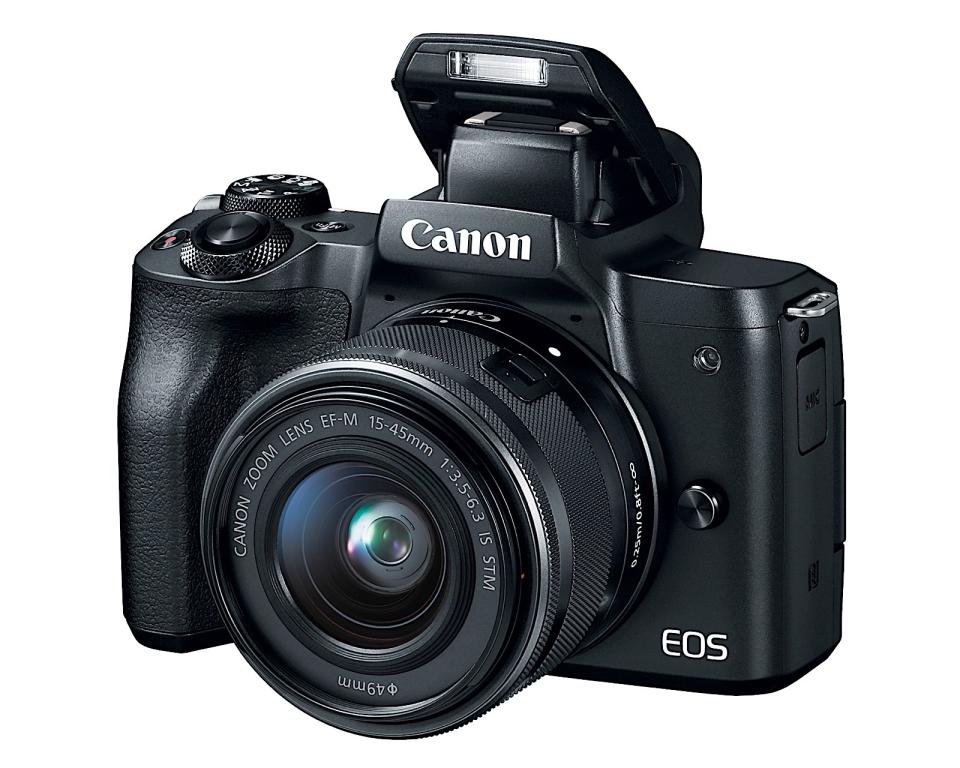Canon launches the EOS M50, its first 4K mirrorless camera
The $780/£540 entry-level model is a good omen for Canon's M-series ambitions.
Canon has responded to criticism of the lack of 4K in all but it's high-end DSLRs by launching the EOS M50, its first mirrorless M-series camera with Ultra HD 4K video. Packing a new DIGIC 8 processor, the 24.1-megapixel, APS-C model can shoot 3,840 x 2,160 video at 24 fps, or 1080p video at 60 fps. At $780/£540 (body only) Canon says the M50 is now its "entry-level" M-series camera. Since it's the only one with 4K, that presents an awkward dilemma for potential buyers of the top-end EOS M5 and M6 models.
If the M50 is the new entry-level M-series mirrorless, then it's a good sign Canon is about to revamp the rest of the lineup. It strongly resembles the high-end, DSLR-like M5, rather than the smaller M10 and M100 models. As you'd expect with that hump, it has an OLED optical viewfinder with touch and drag autofocus, and also pack Canon's vaunted Dual-Pixel phase-detection AF, a vari-angle, flippable touchscreen ideal for vloggers, 120fps slow-motion video (at 720p), a new silent-shooting mode and WiFi, Bluetooth and NFC connectivity.
There's a big caveat to the main new feature, sadly. 4K comes with a 1.6X crop, on top of the existing 1.6X APS-C crop factor, making the sensor effectively smaller for 4K than one on a Micro Four Thirds camera (2.56X total). On top of that, the phase-detection Dual Pixel AF doesn't work in 4K; its use is limited to 1080p video and below. Instead, 4K is stuck with contrast-detection AF. The M50 also lacks in-body optical stabilization, relying on lens and digital stabilization instead.
There are now 99 Dual Pixel AF points on the M50, up from 49 on earlier models.The ISO range is 100-25,600, expandable to 51,200 max, depending on the mode. Burst shooting runs at 10fps, or 7.4fps with continuous autofocus, letting you capture a maximum of 47 images in the latter mode. Video shooters get an external 3.5mm microphone input and HDMI output while shooting, and there's also micro-USB port (but no high-speed USB Type C, unfortunately).
The EOS M50 looks like a very solid entry-level mirrorless camera, but does beg that question as to why someone would now buy the more expensive M5 model. In response, Canon appears to have at least temporarily dropped the prices of all its mirrorless cameras, lowering the M5 from $980 to $930, and dropping the the M6 by $100 from $780 to $680.
As mentioned, the M50 will cost $780/£540 for the body only (in black of white) or $900/£650 with the EF-M 15-45mm f/3.5-6.3 IS STM kit lens. You can also grab it with both the EF-M 15-45mm f/3.5-6.3 IS STM and EF-M 55-200mm f/4.5-6.3 IS STM lenses for $1,250. It arrives in April of 2018.



















